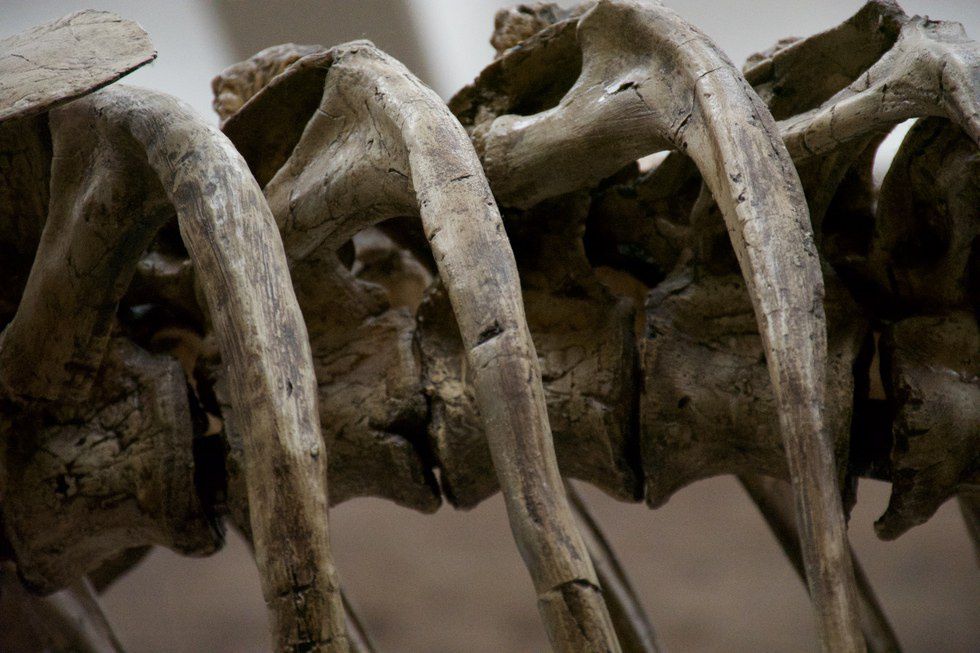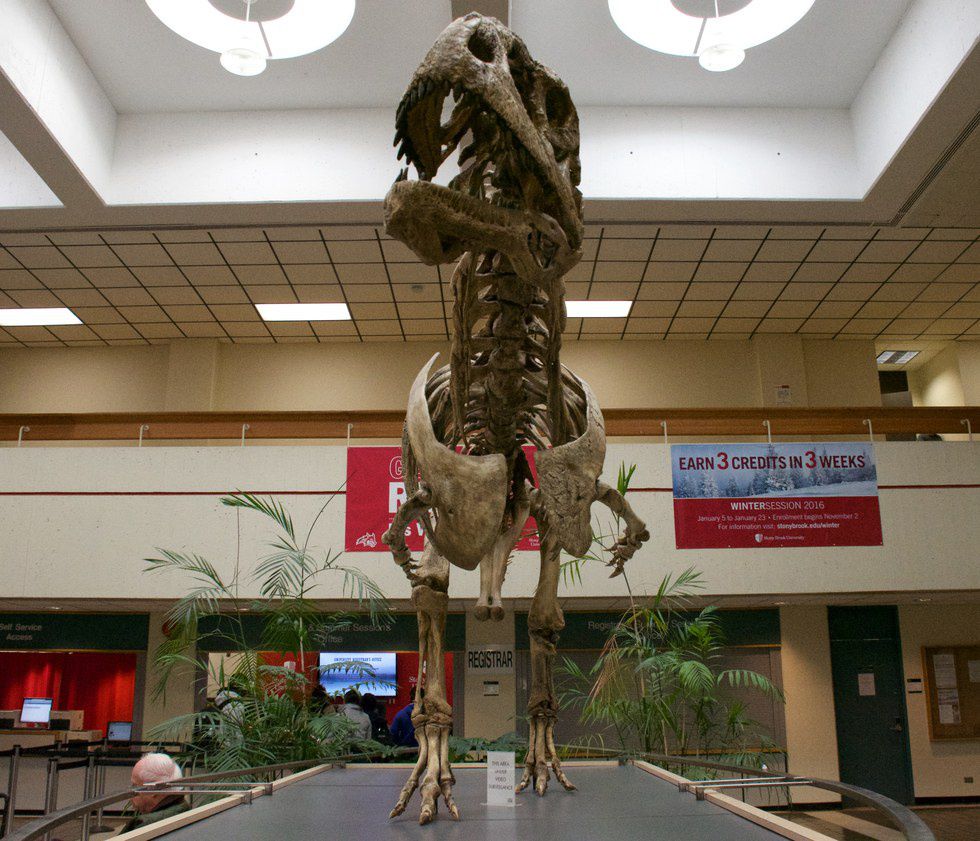Hidden deep within the palm savanna, beneath the dry earth of Madagascar, lay the bones of Majungasaurus crenatissimus.
This carnivorous dinosaur roamed the African island during the Late Cretaceous period, near the end of the Age of Dinosaurs. A distant cousin of Tyrannosaurus rex, this dinosaur was the island’s top predator, feasting on creatures that fell before its powerful hind legs and its large mouth full of deadly sharp teeth.
For 70 million years, this creature remained concealed from the world above. As continents shifted, climates changed and new species evolved, these bones were left unknown and untouched.
So then how did an exact replica of a Majungasaurus skeleton come to call the administration building’s lobby at Stony Brook University home?
David Krause, a professor in Stony Brook’s department of anatomical sciences, and a team of SBU paleontologists went to Madagascar in search of fossil mammals in 1993. While there, they stumbled across isolated teeth of a prehistoric predator, but they did not find anything more until an expedition three years later.
“In 1996, we found a complete skull of the animal, and that was a special moment,” Krause said. “It’s one of the most complete and wellpreserved skulls, now skeleton. That’s what we, as paleontologists, live for, those moments of discovery.”
Their discovery was featured in a 1998 article in the scholarly journal Science, and, in 2005, a replica was displayed at the National Science Museum in Tokyo as part of a traveling exhibition entitled “The Dinosaur Expo 2005: Evolution of dinosaurs from their origin to birds.”
It was not until 10 years after the discovery that an exact replica of the skeleton, which is now on display at the Denver Museum of Nature and Science, found its way to the Long Island campus. The replica was made out of a lightweight plastic resin by Paleoform, a Provo company that is no longer in business.
Since May 2006, the 21-foot-long, 7-foot-wide replica greets those entering the building with a salvaged blacktoothed grin, dwarfed arms ending in lethal claws, and a long, curved tail.
Evidence of tooth marks on bones suggests that these fierce dinosaurs even preyed on their own kind, Krause said.
“The spacing of the teeth and the spacing of the little serrations on the teeth are exactly as the tooth marks on the bones,” Krause said. “Based on that evidence, we think that Majungasaurus was a cannibal, and that was actually the most well-documented evidence of cannibalism in dinosaurs.”
The administration building’s skeleton is the first Majungasaurus replica, and possibly still the only one of its kind, in North America. It is understandable that passersby are initially shocked at the first sight of this prehistoric predator.
“It’s a pretty cool feature,” said Rachit Vhatt, an SBU student. “It’s not something that I would expect, which is where I think that the enjoyment comes out from.”
Hundreds of people pass through the building every day, employees, students and visitors. Majungasaurus is paralyzed in a ferocious stance on a plinth in the center of the 1960s style lobby, greeting those who enter. The building’s yellow lighting gleams down as the heads of passersby turn.
“When I first saw it, I was, like, ‘Oh cool, a dinosaur skeleton,” said student Meiling Li. “I assumed it wasn’t real because it was a pretty complete skeleton.”
But why was Majungasaurus placed in the administration building and not in the Earth and Space Sciences building, like the university’s other skeleton replicas?
Former SBU President Shirley Kenny spent time in Madagascar in 2007 and knew of the accomplishment Krause and the paleontology team had achieved, Krause said. He proposed to Kenny that they display the dinosaur prominently at the university.
“In her typical Texas drawl, she said, ‘I know just the place,’” Krause said. “She said that she had battled for years trying to figure out how to fill up that space. She had tried various pieces of art because her husband’s actually an artist, but she felt that putting a dinosaur skeleton in there would be perfect. She actually nicknamed it Stony Bones.”
And, Krause recalled, Kenny was sure that with Stony Bones sitting in the administration building next to the bursar’s office, the university is probably the only school with a vicious meateating dinosaur protecting its finances.


























